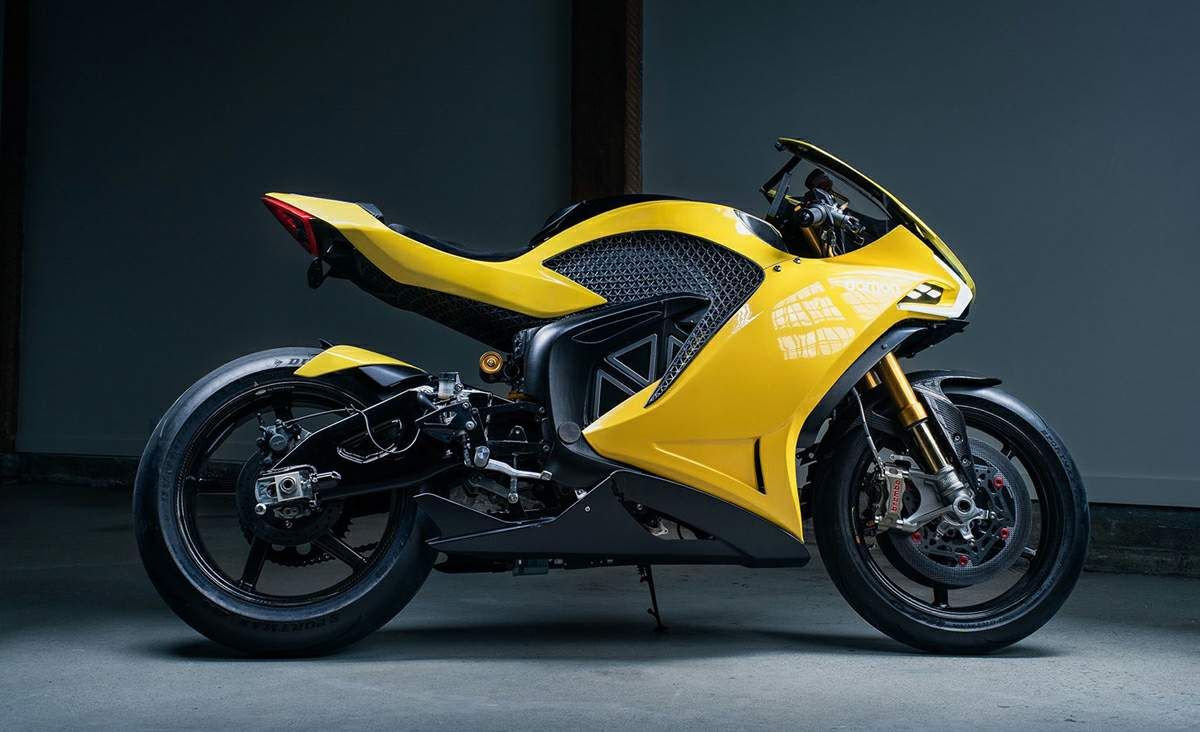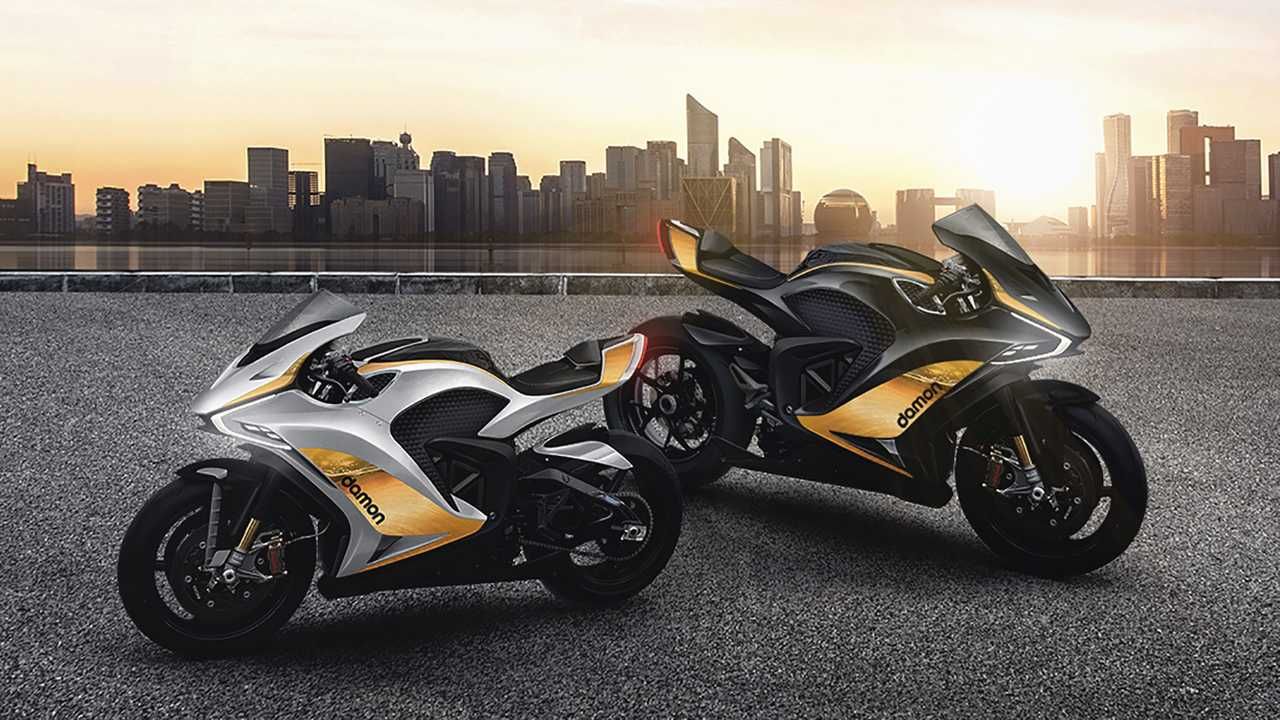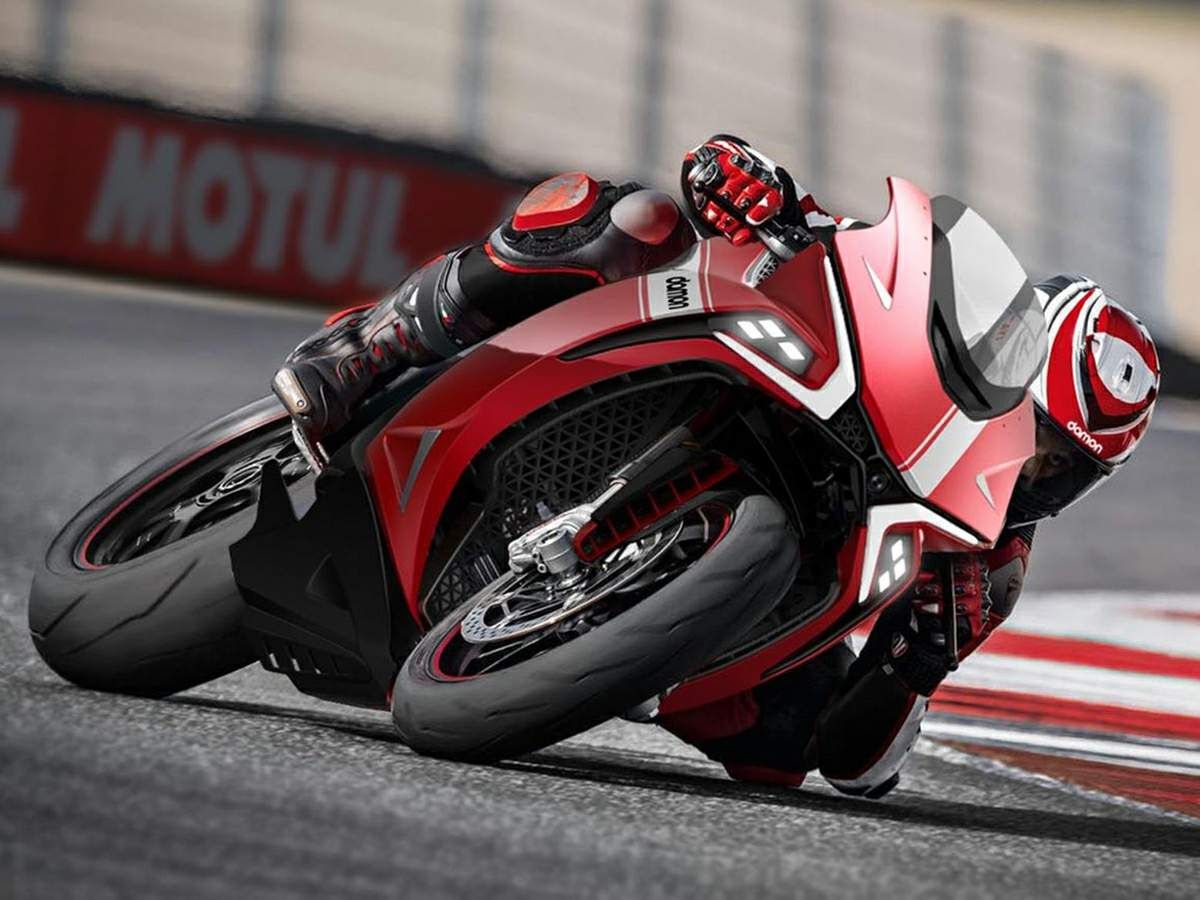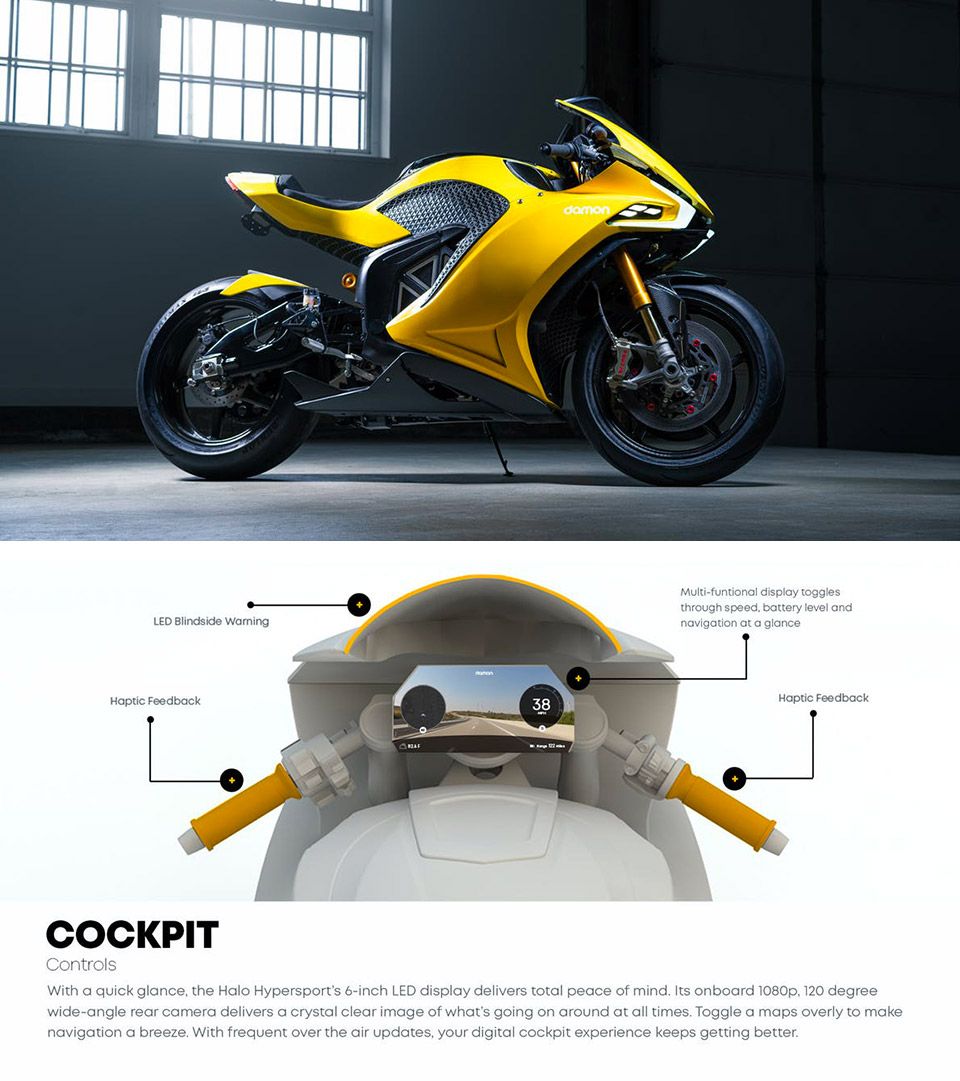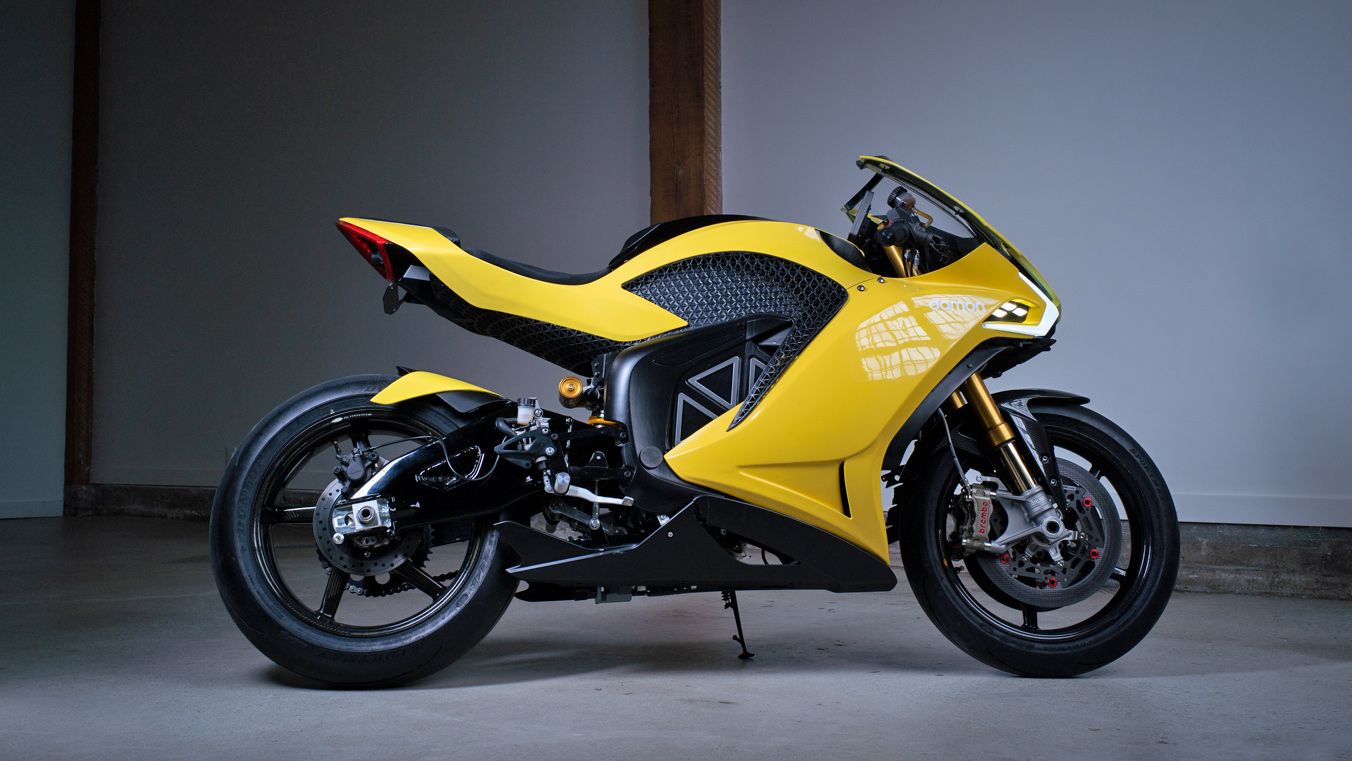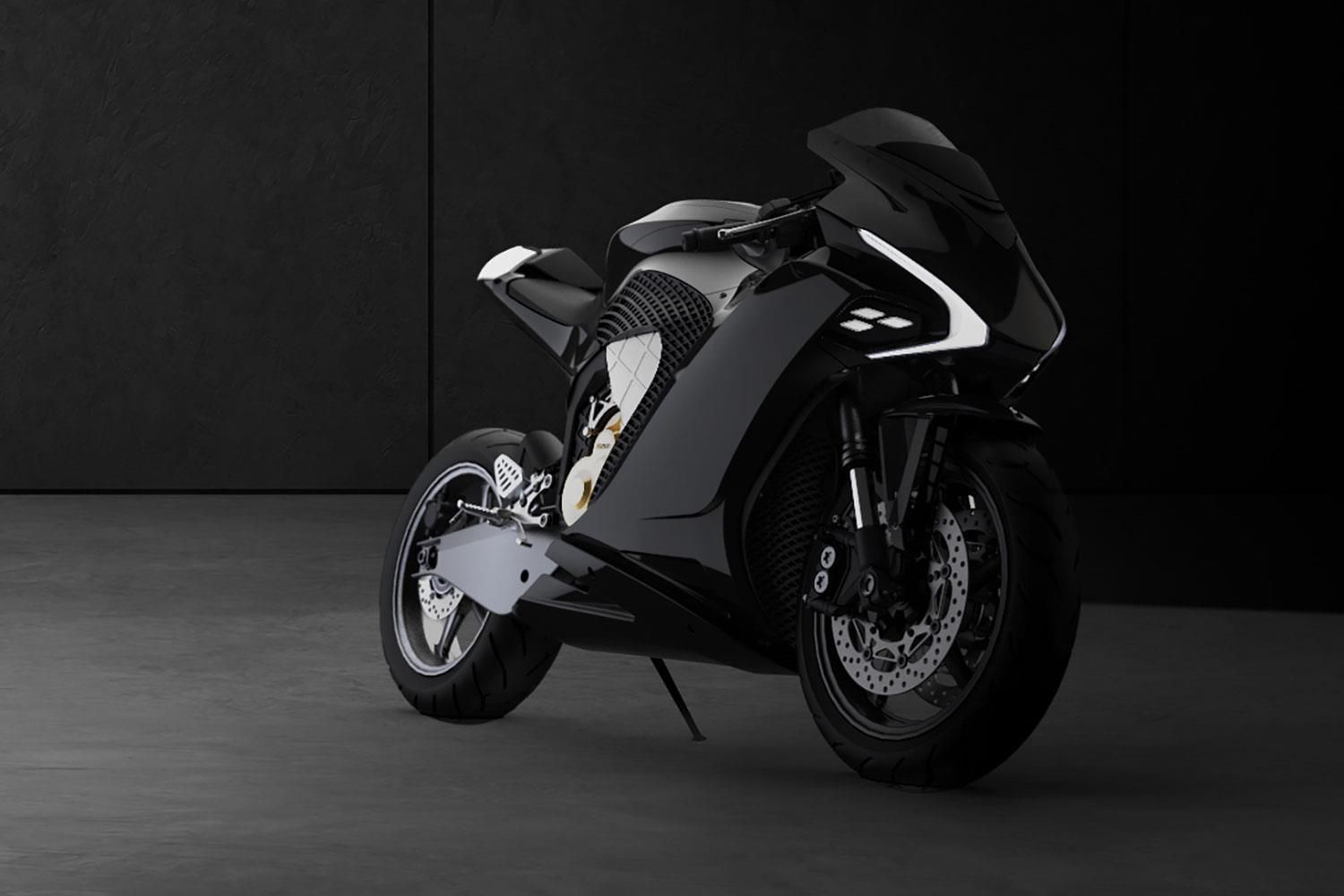CEO of oddly named Damon, manufacturer of electric motorcycles, wants there to be zero collision related fatalities with Damon products by 2030. Is that possible?
Huge tech aims to end collision-related fatalities by 2030
Riding a motorcycle is one big risk after another, a risk that motorcyclists freely accept with their choice of transport. But can that risk be minimised to an acceptable level? Well, Jay Giraud, CEO of Damon Motorcycles, seems to think it can.
“Our goal is zero collision related fatalities with Damon products by 2030,” he stated, without irony.
The basis for such a claim is the adoption of driver-assist technology found in cars and it goes further than radar-equipped detection of vehicles surrounding the bike.
In addition to 360° camera and radar sensors, tyre temperature is monitored by infra-red cameras, microphones detect when the road is wet and G-forces are measured. Along with GPS location, the bike knows exactly where it is and in what conditions it is being ridden.
So much information could distract the rider if it was badly presented so the warnings are delivered in innovative ways. In addition to LED blind-spot indicators at the edge of the rider's vision, the handlebars will also vibrate if a collision is imminent
It's one thing to warn the rider, but quite another to take control out of the hands of him or her. In a car, the systems can steer the car if it starts to drift off course. Similar systems are being developed for bikes by the likes of Honda and BMW, but the Damon seems not to have incorporated these. The thinking goes that, having discarded the metal cage of a car, riders don't want an electronic replacement.
One important element of working at Damon is that everyone rides. It is only by riding that the employees - 70 of them - can "experience the plight of a rider and understand the challenges we face on the road." according to Dom Kwong, co-founder of Damon.
It is this approach that informs them of what feedback is useful to a rider. Having previously worked on head-up display for skiers and snowboarders, Kwong knows that is it easy for the human brain to be overwhelmed with information. The idea behind the tech is to give the rider as much notice as possible of imminent trouble. Maybe one second doesn't sound like a lot but at speed, this can equate to 50 metres and that could make all the difference between taking avoiding action and a collision.
Called CoPilot, the system can track up to 64 objects at once and is network linked to continually learn from each near miss. Software updates are pushed out over the air. The HyperSport - Damon's first super sports bike - will evolve as you own it. Not only that, but the Hypersport will help the rider develop his or her skills by monitoring such parameters as body position, cornering forces and even grip pressure on the handlebars. Once it detects that the rider is relaxing, it can lessen the intervention of certain safety systems such as traction control.
While all this might sound frightening to the large majority of ageing motorcyclists, it is younger generations that are more open to such technology. Damon customers are far younger than the national average, in their mid-thirties as opposed to 50 and that is a big deal: the more young riders are attracted to two wheels, the better the future health of the industry.
At the heart of the HyperSport is a battery pack that is also structural, forming the load-bearing frame. This means that the bike weighs the same as a Yamaha R1, while producing 50bhp more and double the torque, allied to a 200 mile range.
Of course, not everyone wants a high performance monster and, in reality, the demand in the electric bike market will be for light, easy to operate and more affordable commuter bikes and perhaps an adventure bike.
In Asia, motorbikes are the default means of transport for millions and the accident statistics are mind-boggling. Imagine if Damon's technology could reduce those figures. But the real success would be to get people in the western world out of their cars and onto bikes, safe in the knowledge that they will get to work and back home in one piece.
I've said it before, but the not-so-slow change-over to electric is looking increasingly interesting and not the boring disaster the naysayers like to make it out to be. Change is inevitable but, with companies such as Damon developing new tech, it won't be boring!

